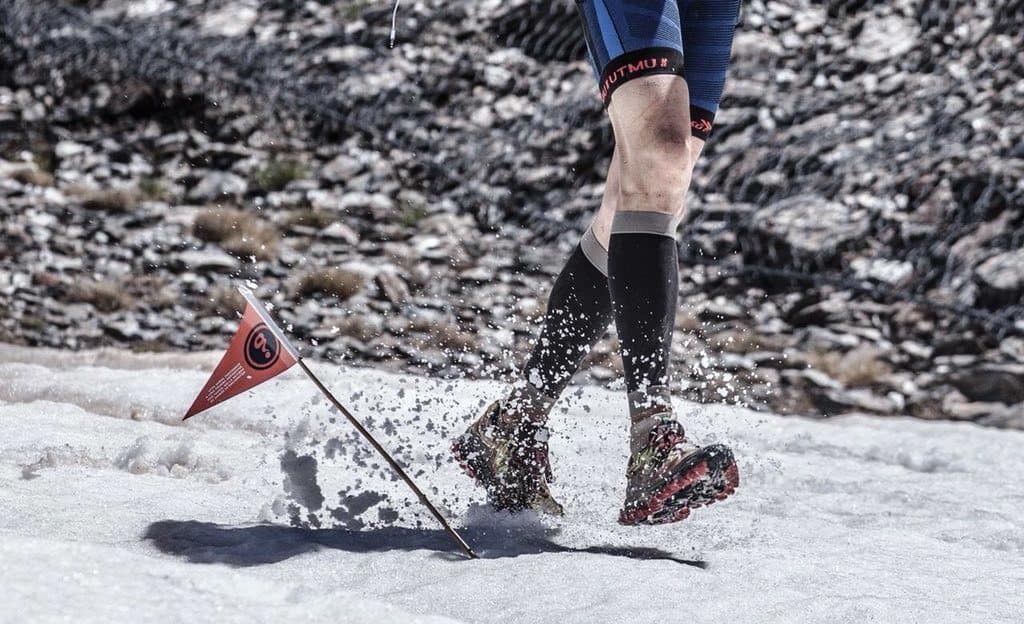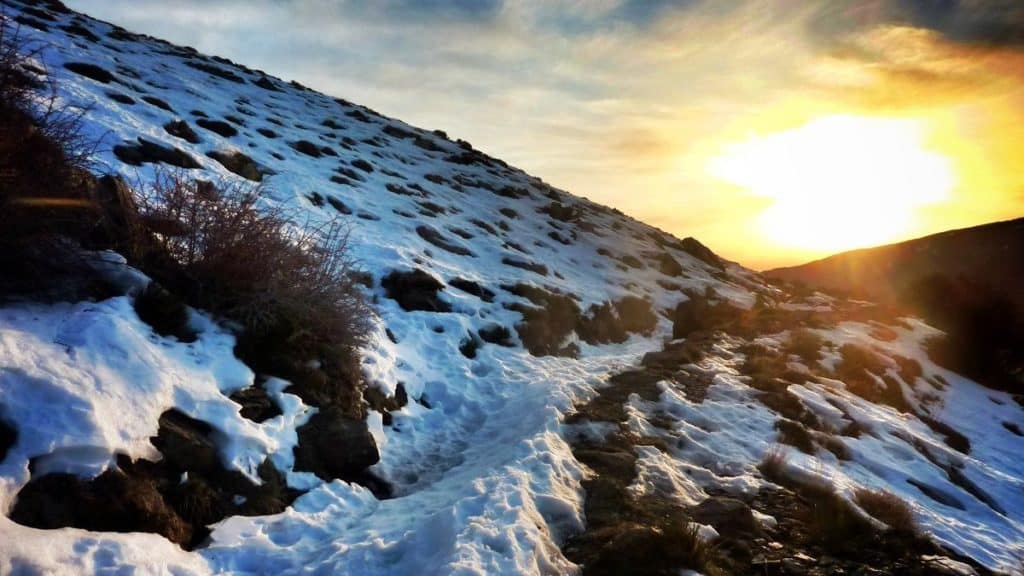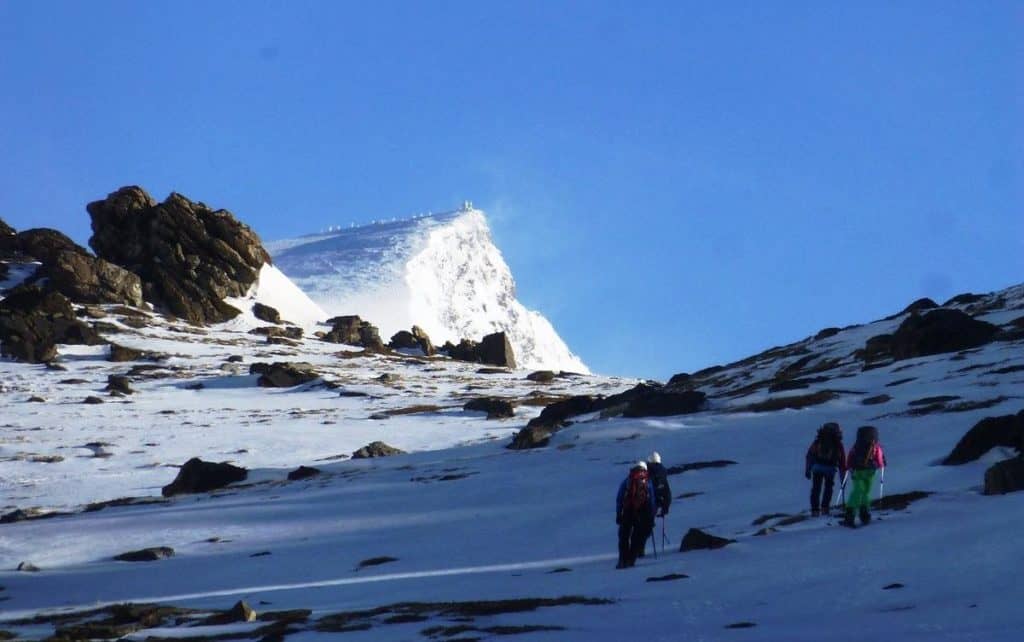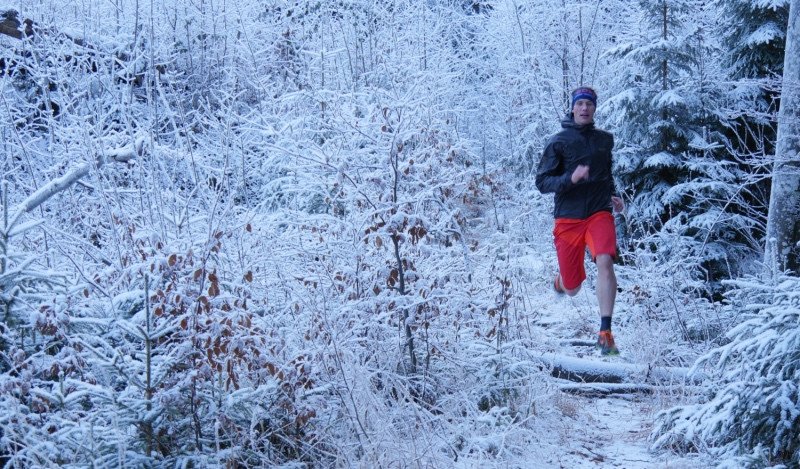
At gym this evening my usual trail run buddy and I were discussing a potential outing for January. Even though our intended route is below the current snow line there is the flimsy chance that a storm system could come through and dump some fresh snow on our path a couple of days before we are due to go. Neither of us have technical snow and ice mountain boots. We decided to check if we had options.
Are trail running shoes good for hiking in the snow? Trail running shoes can be used for hiking in the snow as long as the snow is still relatively fresh. The protruding lugs of a trail running shoe will be what gives traction as your weight compacts the snow.
Many many people go to the expense of getting heavy water-proof hiking boots for the winter snow when there is a far simpler option right under their noses. However, wintry conditions of snow and ice do present a unique set of challenges. Let’s unpack all of those so that you can enjoy this next winter better than years gone past.
What Makes Trail Running Shoes Great for Winter Hiking
Trail running shoes work brilliantly for hiking in the snow under most conditions. If the snow is fresh or if it is crusty snow from freeze/thaw days the lugs of your trail shoes will give plenty of traction. In addition, in the highly likely event that the shoes get wet, trail running shoes will dry out way faster than hiking boots.

Better Under Sole Protection
Trail running shoes are made from lighter materials than standard hiking boots. In the past trail running shoes had thin soles that didn’t do much to protect your feet from sharp stones and trail debris. These days, however, there are options of “maxi” soled trail running shoes that do an even better job than most hiking boots to protect your feet. When hiking in the snow this is no longer a factor as you will have a layer of snow between your trail shoes and any sharp rocks or debris on the trail.
The other factor often cited is that of ankle protection. Although hiking boots offer some degree of ankle support especially when you have a very heavy pack on your back. In truth, nothing short of full rigid plastic ski boots or ice climbing boots will give you total protection against ankle sprains. Here again, the nature of the majority of snow covered winter trails you will walk on do not require anywhere near that level of ankle support.
The term ankle support alone has sold more pairs of hiking boots than any other. Much the same as Born To Run has fueled the craze for minimalist shoes and barefoot running.
Trail Running Shoes are Almost as Durable
For sure hiking boots will be more durable over time in snow and wet conditions. This is because the bonding materials used in trail run shoe construction are water based. This is also why repeatedly running your running shoes through the washing machine is a bad idea.
Most hiking boots have a life span of 1000 miles. If the boots are carefully maintained and trail conditions not too harsh you can probably squeeze a further 250 miles out of them. Conversely, I stop running in a pair of trail shoes after 600 miles. Sometimes I go further while waiting for a new pair to arrive.
Once I stop running in a pair of trail shoes the soles still have decent traction, so I rotate them into my collection of hiking shoes. I usually get at least 250 miles of hiking out of a pair of “retired” trail shoes before they are
Trail Running Shoes are More Comfortable
“If you want to forget all your other troubles, wear too tight shoes.” ~The Houghton Line
This is where trail running shoes start really coming into their own on snow-covered trails. Boots give you a snug fit all the way up the ankle. The trace off for this extra support is a restricted range of movement. In fact, you will have hardly any wriggle room at all.
Trail shoes are nowhere near as restrictive. Due to the softer materials, you will have a much greater range of motion as well as flexibility. Every year that I have walked the Camino de Santiago in Spain it seems that almost all the blisters and other foot problems are suffered by those who were wearing boots. True, the Camino is far from a snow trail, but as a long distance trail it shows up the comfort of trail shoes.
Hiking boots are more rigid, and generally, the only way your foot muscles can flex is when your feet move around inside the confines of the boot. When you add the wet socks you will have from hiking in the snow there is only one obvious outcome – blisters. For me, blisters negatively impact my level of enjoyment out on the trail. That is especially true on multi-day through-hikes.

Cold Conditions Need a Little Planning
Snow and cold weather go together like peas and carrots to misquote Forrest Gump. This is where I always thought that the insulating effect of hiking boots would dominate. Apparently, this is not necessarily the case.
Something that I remember from my years of hiking in boots is that no matter how waterproof the boots were, my feet always got wet. After a couple of hours of hiking snow would trickle into my boots and melt. My socks and feet would be sloshing around in waterproof boots filled with water. Even worse is a multi day hike because the boots don’t dry out overnight.
Conversely, trail running shoes with their mesh uppers are anything but waterproof. You are guaranteed that your feet will get wet. The good news is that within a short time of moving out of the snow your shoes will be well on their way to drying out. Also if you overnight there is a good chance that you will start the new day with dry or almost dry shoes.
One mistake that I made when I first started using trail shoes in cold winter conditions was to add layers of my thick hiking socks. The thick socks made my trail running shoes very tight. Overly tight shoes restrict blood flow causing your feet to be colder than they would be with light running socks.
If you decide to buy a pair of trail running shoes for just hiking in winter then wear your thick hiking socks when you try on shoes. Because I use my trail running shoes from the previous running season for winter hikes I needed an alternate solution.
My solution came when I found these wonderful lightweight Injinji socks in Marino wool on Amazon. They keep my feet and toes warm across the icy ground. What I also do is keep a dry pair of Injinjis in the inside pocket of my fleece jacket. That way when I move back down the mountain I can stop at the bottom edge of the snow-pack and change into a pair of warm dry socks.

Trail Running Shoes Weigh Less
Weight is the easiest criteria to understand when comparing hiking boots to trail running shoes for outings in the snow. Hiking boots are by nature heavier than trail running shoes when you look at dry weight. Whichever you choose for your outing in the snow, your footwear will be wet. The wet weight difference between trail running shoes and hiking boots is even greater.
One constant that we all know is that the more weight you carry, the more energy you expend to cover the same distance.
When it comes to your energy levels, weight on your feet uses six times more energy than the same amount of weight in your backpack. This energy saving makes a bigger and bigger impact the longer and further you are out on the trail. In other words, switching from a 3-pound pair of boots to a 1-pound pair of trail running shoes is the same as removing 12 pounds of weight from your backpack.
Trail Running Shoes Don’t Need Breaking in
One thing that I remember from my years of using hiking boots in all weather and trail conditions is that the first 50 miles or so would be hell for my feet. That is how long it took for my new boots to start getting broken in.
Conversely, trail running shoes are generally good to go just about straight out of the box.
A prime example was on my second Camino de Santiago. My trusted, well worn, hiking boots broke just over a hundred miles from the end. Not wanting to punish my feet by breaking in a new pair of boots so far into my hike I bought a pair of Speedgoats (Hoka One One) and never looked back. Since then I have only hiked in trail running shoes.

Fitness Level and Speed Impacts Shoe Choice
Even though trail running shoes are my default snow trails that do not require crampons or technical climbing, I will still suggest that beginners wear boots. You can then graduate to trail running shoes as you get fitter.
The reason is this. When you are less fit you need to walk slower, especially on steeper gradients. You may even need to stop and take regular rest breaks. You need to keep moving and moving briskly to keep generating heat.
The heat that you generate through physical exertion increases your CLO factor. That means you need less insulation for your feet as you will have extra blood flow from your core to dissipate the heat build up. That, in turn, keeps my feet warm in my wool trail running socks. However, stopping or slowing once I get going at pace in the snow makes me get cold very quickly.
When you do try your trail running shoes with fairly thin socks for the first time, be sure to pick a relatively benign trail. You want a safe and fairly flat trail. That way you can experience what it feels like to be moving over snow faster and lighter than normal.
Everyone is different as regards what is a comfortable and sustainable pace for a given fitness level. In the same way, there is a wide array of trail types and snow conditions.
Packing Light Allows for Lighter Shoes
One question is about how light your pack needs to be before you are able to switch to running shoes. The truth is that hiking on snow gives you additional cushioning underfoot.
So the question about pack weight in the snow is more about the burden that you are able to carry without needing rest stops. It is the sudden chill during a rest stop that will catch you more than the impact of pack weight on running shoes.
Even when the conditions underfoot are dry, hundreds of hikers use trail running shoes on long through hikes like the Pacific Crest and the GR11 across the Pyrenees where they need to carry heavy packs on fairly rough trails. If they can cope on hard, dry rocky trails, you can cope on softer snow trails.
Considerations When Making The Switch
One key factor that I look at when choosing trail running shoes is the outer sole construction. I need something that I know will withstand the rough trails of the Sierra Nevada where I live. What I have noticed is that more shoe manufacturers have started using the same outer sole materials as are used in hiking boots. Those shoes have the same type of durable lugs that will grip the snow.
I switch back and forth between two types of trail shoes. Their lug patterns are different but both work well in the snow. When I am on super rocky and technical trails I prefer the Vibram soles of the Hoka Speedgoat. On smoother dirt and gravel trails I default to the Altra Timp Trail.
Still Skeptical about Trail Running Shoes?
Think about the types of trail that you hike on both under snow and dry. Does the trail more closely resemble a technical mountain peak, or something that runners do trail races on?
The chances are
Trekking Poles are an Absolute Must
When you hike in trail running shoes, trekking poles are an absolute must.
Poles allow you to lift up to 20% of impact weight off each step, allowing you to keep going much longer without needing to stop and rest. As I mentioned earlier keeping going is vital for maintaining body heat in the snow.
When the trail tilts uphill the weight bearing aspect of trekking poles becomes even greater.
The late Uli Steck often took trekking poles on snow and ice alpine routes as it allowed him to cover ground so much quicker. I remember hearing him mention that trekking poles allowed him to spend way less time in the path of potential avalanches, making his climbing much safer.
Related Questions
What types of snow conditions are best suited for trail running shoes? The lug pattern on the soles of trail running shoes is best suited to either fresh snow that has not yet compacted, or crusty snow from repeated thaw and freeze.
Can I wear extra thick socks in my trail running shoes during winter? Wearing extra thick socks in your trail running shoes will squeeze your feet too tightly. This will restrict your circulation and cause
